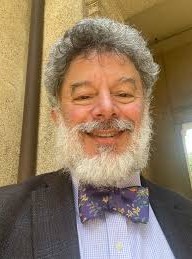
Next Ensemble Presents:
Survivors
March 7, 2025

Tonight's Performers
Stephanie Quinn - Host
Born and raised in the Ogden, Utah area, Stephanie has enjoyed a rewarding career in the field of education. Although her most recent experience has been in higher education administration, Stephanie has had the opportunity to work with a broad range of individuals from kindergarten to college. Stephanie is currently pursuing a Master of Social Work degree and looks forward to the opportunity to promote mental health and well-being in her beloved Ogden community.

Esther Ahn - Piano
Lauded by the Boston Musical Intelligencer for her interpretive coherence and graceful realization, pianist Esther Jeehae Ahn has captivated international audiences with her rare blend of musical brilliance, sensitivity, and emotional depth. As a soloist and chamber musician, she has performed in major venues,
series and festivals throughout North America, Asia, and Europe, among them Alice Tully Hall at Lincoln Center, Boston Symphony Hall, Flynn Performing Arts Center, Jordan Hall, Calderwood Hall at Isabella Stewart Gardner Museum, Seoul Arts Center, Mozart Hall, Moscow Conservatory, University of Music and Theatre Leipzig, Rockport Chamber Music Festival, Busan Music Festival, Summer Institute of Contemporary Performance Practice, International Liszt Symposium, Korean-American Cultural Foundation, and MusicFest Canada.
Esther earned her Bachelor and Master of Music degrees in Piano Performance from New England Conservatory and Doctor of Musical Arts degree in Piano Performance and Literature from Eastman School of Music, with a minor degree in Accompanying and Chamber Music. Her teachers have included the late Russell Sherman, Wha Kyung Byun, Meng-Chieh Liu, Rebecca Penneys, Douglas Humpherys, Paul Biss, Gabriel Chodos, Donald and Vivian Weilerstein, and Jean Barr. She won numerous prizes and awards, including first prizes in Junior Chopin Competition, Harvard Musical Association Competition, Boston Symphony Orchestra Concerto Competition, Busan Music Festival Competition, Ye-Eum Piano
Festival, Jack Kent Cooke Young Artist Award from the Jack Kent Cooke Foundation, Frances B. Lanier Award from New England Conservatory’s Preparatory School, and Arnold C. Taylor Award from Walnut Hill School for the Arts where she graduated summa cum laude and was inducted to the National Society of High School Scholars. She was a guest artist at the South Korean launch of Steinway & Sons, the Ministry of National Defense in South Korea, and at the US-Korea Conference in New York City. Her performances have been broadcast on National Public Radio’s From the Top and WSMR Classical.
Equally at home with the traditional canon and music of our own time, Esther’s advocacy of new music has led to working closely with such distinguished composers as Peter Maxwell Davies and Unsuk Chin, as well as performances of works by leading contemporary voices including Jessie Montgomery, Caroline Shaw, Jennifer Higdon, Steve Reich, and John Harbison. She gave the world premiere of Amy Dunker’s solo works written for the courageous people of Ukraine. In recent seasons, Esther has been invited to appear as a guest artist with the American Liszt Society, NOVA Chamber Music Series, Bonneville Chamber Music Festival, Korean-American Federation of Utah, Ogden Piano Festival Cultural
Extravaganza, Browning Trio, and at two special gala celebrations for Walnut Hill School for the Arts.
Additionally, she can be heard as a collaborative pianist on the recording of Thom Priest’s original composition for Bassoon and Piano, “Running the Green." The 2024-2025 season features an array of performances across Utah and beyond, including a solo recital as the Concert Artist for the Utah Music Teachers Association State Conference, several concerts featuring new music and chamber music, a return to the Charlotte Bach Festival, a national recital tour with tenor Michael Gonzalez, and the release of two upcoming albums.
As an artist-teacher, her passion lies in nurturing individual expression, human compassion, and unique talents from all walks of life. Esther currently serves as Assistant Professor of Piano at Weber State University, where she is also the Director of WSU Piano Festival and Accompanying area. In the summers, she is on the Artist Faculty of Bay PianoFest at the San Francisco Conservatory of Music.
Additionally, she held the role of Program Assistant at the Rebecca Penneys Piano Festival at the University of South Florida for two seasons and was a faculty-mentor at Bravo Waukegan and American Music Centre. A sought-after adjudicator and clinician, she has been invited to judge numerous competitions and give masterclasses across the country. Esther is also Chair of the Music Teachers
National Association Piano Performance Competition for the State of Utah and has served as the Chair of the Collegiate Program for the Utah Music Teachers Association. She previously taught at New England Conservatory and Eastman School of Music and served on the piano faculty at Clarke University.
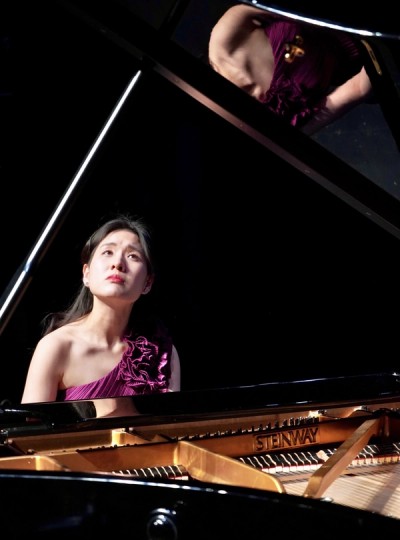
Blanka Bednarz - Violin
Violinist Blanka Bednarz is an alumna of the Jadwiga Kaliszewska Talent School in Poznan (Poland), University of Kansas (BM) and the New England Conservatory MM and DMA). She studied with Eric Rosenblith, Michelle Auclair, Ben Sayevich and (viola with) James Dunham, and chamber music with Patricia Zander and members of the Ying, Cavani, and Borromeo Quartets.
As soloist, she has performed with the Changsha Symphony, Connecticut Virtuosi, Symphony and Chamber orchestras of the New England Conservatory, Gettysburg Chamber Orchestra, Sinfonietta Polonia and the Delaware County Symphony and others. She has performed in the USA, United Kingdom, Poland, Germany, Italy, Sweden, Finland, China, the Netherlands and Lithuania, at the venues such as Jordan Hall in Boston, Miller Hall, An Die Musik, Philadelphia Ethical Society, Kosciuszko Foundation, Weill Recital Hall at Carnegie Hall, Grosser Sendesaal des Rundfunks Berlin-Brandenburg, the Beijing Concert Hall and Adam Mickiewicz University Auditorium in Poznan. She can be heard on Capstone Records, Acte Prealable and Musica Omnia.
Bednarz is an avid chamber musician. She participated in series and festivals, such as the Highlands-Cashier Chamber Music Festival, Candlelight Series in Baltimore, the Park City Chamber Music Festival, Intermezzo Series in Salt Lake City, Chopin Festival in Miami, FL in the USA, and “Chopinesque Confrontations”, “International Festival of Organ and Chamber Music” in Słupsk, Mozart Festival in Poznan and Chanterelle Festival in Gołuchów in Poland, on invitations from organizations such as the Chopin Foundation of the United States, Kościuszko Foundation, Karol Szymanowski Society, Polish Embassies in Beijing and Berlin. With Atma Trio she performed throughout Europe and the United States, and in China. Atma Trio’s CD, on the leading Polish label Acte Préalable, was highly praised in Muzyka 21: “Excellent piano trios by Mendelssohn and Ravel in masterful rendition.”
She collaborated with renowned artists such as John Novacek, Barry Snyder, Rita Sloan, Vedrana Subotic, Brian Ganz, Doris Stevenson, Jeffrey Solow, Simon Gollo, Manuel Ramos, Adrian Levine, Monte Belknap, Richard Stoltzman, Leslie and Russell Harlow, members of Boston, St. Louis and Baltimore Symphonies, Corigliano and Amernet Quartets, Boston Modern Orchestra Project, Alarm Will Sound, Harrisburg, Utah and the Baltimore Symphonies. In 2007-08 Bednarz joined as the first violinist the Vega String Quartet-in-residence at Emory University in Atlanta, GA ("marvelous foursome,").
Bednarz is currently faculty of the University of Utah and Utah Valley University, Gifted School of Music and the International Musicians Academy http://internationalmusiciansacademy.com/ . She is also faculty at the University of Utah's summer Chamber Music Workshop. She taught at Dickinson College, the Young Artist Institute under Beethoven Festival Park City (UT), NEC Preparatory School and Emory University. She coached chamber music at International Musical Arts Institute, ME; the International Music Institute and Festival, MD, at Franklin Pond in Atlanta. She has given master classes at universities and colleges in the USA, Poland and China. Bednarz served as concertmaster of Sinfonietta Polonia and Gettysburg Chamber Orchestra, as well as Utah Metropolitan Ballet Orchestra. She is Executive Director and conductor of Utah Valley Youth Symphony Orchestra (www.uvyso.org) as well as associate conductor of Utah Valley Symphony.
CD of Matthew Bengtson and Blanka Bednarz, Karol Szymanowski: Music for Violin/Piano; Piano Solo (2017 on Musica Omnia) was awarded a Global Music Awards Silver Medal – Outstanding Achievement in classical and instrumental/instrumentalists category. Bednarz was also a finalist in chamber music category and received an honorable mention as soloist in the American Prize Competition.
“Blanka Bednarz is clearly a remarkable violinist…” –D. Morrison, Fanfare.
“Outstanding Polish violinist.” --Marek Zaradniak, Glos Wielkopolski.

Erin Voellinger - Clarinet
Erin Voellinger is the Principal Clarinetist with the Ballet West Orchestra. In addition to her work with the ballet, she plays freelance with the Utah Symphony, recording studios, and many other organizations in the Salt Lake area. She manages and plays clarinet in the Park City Polka Players, which plays for many festivals and private parties during Oktoberfest and is currently the house band for Snowbasin's SnoWeisn weekly fall festival. She is the adjunct clarinet professor at Westminster University and teaches private clarinet lessons in Park City, where she lives with her husband and son. She received a Bachelors in music performance at the University of Northern Colorado where she studied with Bil Jackson, and a Masters in Music at Florida State University with Dr. Frank Kowalsky.
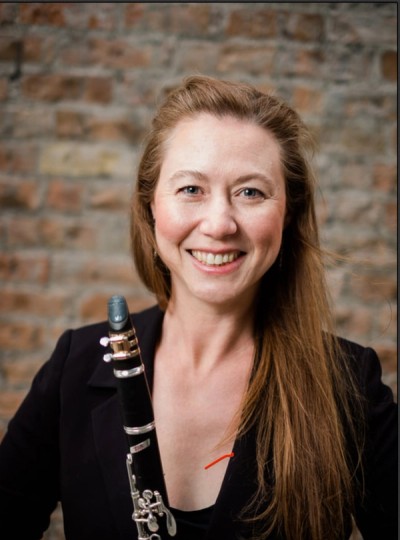
Composers' Notes
Jennifer Higdon - "String Poetic
Solitude, Reflection. This is the only program note available: Nocturne…that piece of night-night of peace
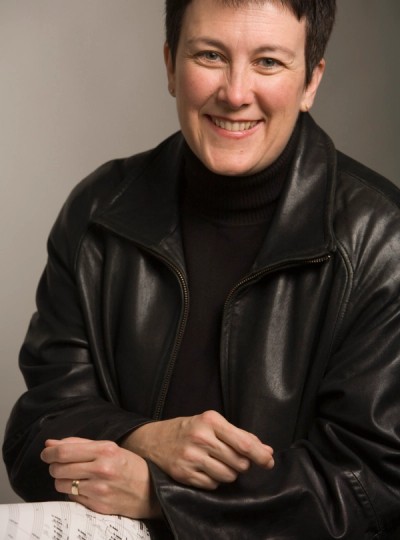
Michael Albaugh - The Knife of Loneliness
“The Knife of Loneliness is composed as three movements in one piece. It was originally conceived as material for a larger string trio, but it became great source material for my then neighbor, clarinetist Nathan Williams and his trio Strata when I was invited to contribute for a concert. The first section is determined and driven, reflecting the push for clarity in difficult life situations. The second section is reflective and contemplative. It is sad but hopeful with resolve to move forward which is reflected in the final section. Life provides many opportunities to overcome difficult situations – it simply takes time"
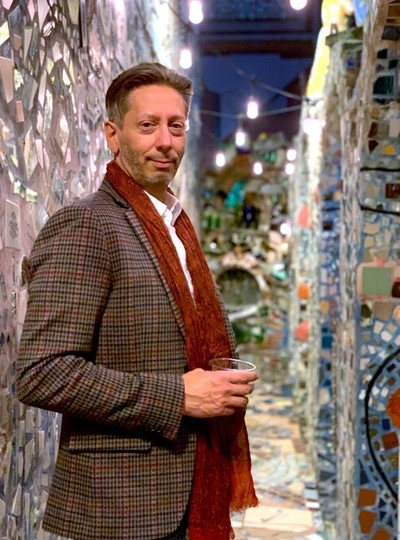
Caroline Shaw - Gustave the Gray
Chopin’s opus 17 A minor Mazurka is exquisite. The opening alone contains a potent poetic balance between the viscosity and density of the descending harmonic progression and the floating onion skin of the loose, chromatic melody above. Or, in fewer words – it’s very prosciutto and mint. When someone asks me, “So what is your music like?” – I’ll sometimes answer (depending on who’s asking), “Kind of like sashimi?” That is, it’s often made of chords and sequences presented in their raw, naked, preciously unadorned state – vividly fresh and new, yet utterly familiar. Chopin is a different type of chef. He covers much more harmonic real estate than I do, and his sequences are more varied and inventive. He weaves a textured narrative through his harmony that takes you through different characters and landscapes, whereas I’d sometimes be happy listening to a single well-framed, perfectly voiced triad. But the frame is the hard part – designing the perfectly attuned and legible internal system of logic and memory that is strong but subtle enough to support an authentic emotional experience of return. (Not to get all Proustian or anything.) In some way that I can’t really understand or articulate yet, photographs can do this with a remarkable economy of means. Translating that elusive syntax into music is an interesting challenge. Then again, sometimes music is just music. Gustave Le Gray is a multi-layered portrait of Op. 17 #4 using some of Chopin’s ingredients overlaid and hinged together with my own. It was written expressly for pianist Amy Yang, who is one of the truest artists I’ve ever met.
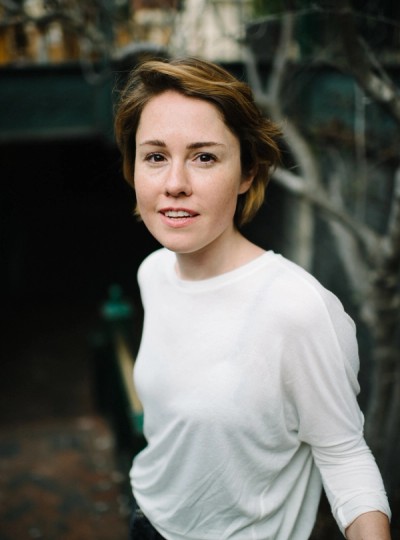
Charles Ives - Largo
When Charles Ives (1874-1954) graduated from Yale in 1898 (where he had taken classes in music under Horatio Parker), he moved to New York City and began working as a clerk for the Mutual Life Insurance Company. He was also organist-choirmaster at Central Presbyterian Church and spent all of his free time composing. The Largo for violin, clarinet, and piano was composed during this time and the published edition gives 1901 as the date of composition. (However, Henry and Sidney Cowell date it a year later.) Ives himself listed a Trio (1902-03) for these instruments but it has not been found. The work was originally written for violin and organ, then revised for a very early, but apparently discarded, sonata for violin and piano. The Largo ranks as an early work and comes at a time when his music was becoming purposely more experimental. This work is absolute music and has no hymn tunes, patriotic or popular songs, band or dance music, etc. Like the slow movement of a classical sonata, it begins in G Major with the piano and violin in a largo tempo and closes in the same manner. The clarinet enters at a faster andante tempo and leads into a ragtime section with all three instruments playing together. Its twentieth-century aspect consists of complex meters in the piano part and asymmetrical melodic materials in the violin and clarinet lines, making for some quite contemporary and dissonant counterpoint. Charles Ives (1874-1954) was born in Danbury, Connecticut and pursued what is perhaps one of the most extraordinary and paradoxical careers in American music history. Businessman by day and composer by night, Ives’s vast output has gradually brought him recognition as the most original and significant American composers of the late nineteenth and early twentieth centuries. Inspired by transcendentalist philosophy, Ives sought a highly personalized musical expression through the most innovative and radical technical means possible. His fascination with bi-tonal forms, polyrhythms, and quotation was nurtured by his father. Ives later acknowledged his father as the primary creative influence on his musical style, and his studies at Yale guided an expert control over large-scale forms. Ironically, much of Ive’s work would not be heard until his virtual retirement from music and business in 1930 due to severe health problems. The conductor Nicolas Slonimsky, music critic Henry Bellamann, pianist John Kirkpatrick, and the composers Lou Harrison and Henry Cowell all played a key role in introducing Ives’s music to a wider audience. In 1947, Ives was awarded the Pulitzer Prize for his Symphony No. 3, according him a much deserved modicum of international renown. By the time of his death, he had witnessed a rise from obscurity to a position of unsurpassed eminence among the world’s leading performers and musical institutions.

Jessie Montgomery - Peace
Written During Covid. Written just a month after the Great Sadness of the first quarantine orders due to COVID-19, facing the shock felt by the whole globe as well as personal crisis, I find myself struggling to define what actually brings me joy. And I’m at a stage of making peace with sadness as it comes and goes like any other emotion. I’m learning to observe sadness for the first time not as a negative emotion, but as a necessary dynamic to the human experience.
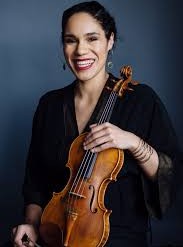
Stephen David Beck - Songs for a Prelude (2001)
Commissioned by the Verdehr Trio, Songs for a Prelude is the composer’s response to the tragic events of September 11, 2001. The underlying musical gestures are all generated from the numbers 1, 9 and 11, and are manifest in pitch classes, rhythms and note durations, and in small and large scale phrases.
The opening gesture demonstrates this by using the pitch classes 1 (C#), 9 (A), and 11 (B). Its counter gesture is an inversion and slight compression of the intervals found in the first gesture. The sustained notes of these gestures are held for lengths of 9 eighth-notes, 11 eighth-notes and 1 eighth-note. At the same time, this numerology does not interfere with or dictate the dramatic flow of the work. Rather, it is used to enhance the sense of drama and climax that leads to the cathartic release at the end of the final movement.
The title of the work and its four movements comes the opening poem in Walt Whitman’s book Drum-Taps, entitled First O Songs for a Prelude. Written about Whitman’s experiences as a hospital volunteer during the civil war, the first stanza provides a remarkable and timely description of New York, its strength and resilience and the fundamental American spirit.
First O songs for a prelude,
Lightly strike on the stretch’d tympanum pride and joy in my city,
How she led the rest to arms, how she gave the cue,
How at once with lithe limbs unwaiting a moment she sprang,
(O superb! O Manhattan, my own, my peerless!
O strongest you in the hour of danger, in crisis! O truer than steel!)
How you sprang – how you threw off the costumes of peace with indifferent hand,
How your soft opera-music changed, and the drum and fife were heard in the stead,
How you led to the war, (that shall serve for our prelude, songs of soldiers,)
How Manhattan drum-taps led.
